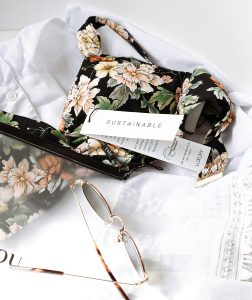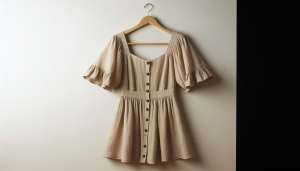What are the environmental impacts of fast fashion? This is a question many of us have started to ponder as we see our closets fill up with trendy, inexpensive pieces. Fast fashion has revolutionized the way we shop, offering affordable and stylish options at the click of a button. But at what cost to the environment?

Understanding Fast Fashion
To grasp the environmental impacts of fast fashion, it’s essential to first understand what fast fashion is. Fast fashion refers to the rapid production of inexpensive clothing, inspired by the latest runway trends. The goal is to bring these styles to consumers as quickly as possible, sometimes in as little as a few weeks or months. This allows us to constantly update our wardrobes but also leads to several ecological consequences.
Key Characteristics
Fast fashion is identified by several key characteristics:
- Rapid Production: Brands like Zara and H&M can take a design from the runway to their stores in a matter of weeks.
- Low Prices: Clothing is often sold at low prices, making it accessible to a wide audience.
- Short Lifespan: These garments are not made to last and often become outdated or worn out quickly.
- High Volume: Huge quantities of clothing are produced to meet continuous consumer demand.
Understanding these characteristics helps us see how fast fashion directly influences environmental issues.
Textile Production and Its Environmental Footprint
The first major environmental impact of fast fashion lies in textile production. This process requires vast resources, including water, energy, and raw materials, and often involves harmful chemicals.
Resource Intensiveness
Water Usage
Textile production, particularly for cotton, is incredibly water-intensive. To produce just one kilogram of cotton, approximately 20,000 liters of water are needed. This puts immense pressure on freshwater resources, particularly in regions that are already water-scarce.
Energy Consumption
The energy required for textile production is staggering. Factories often rely on non-renewable energy sources, contributing to greenhouse gas emissions. The processes of spinning, weaving, dyeing, and finishing textiles all consume significant amounts of energy.
Chemical Pollution
The use of chemicals in textile production is another severe concern. Dyes, bleaches, and other finishing agents often contain toxic substances. When improperly managed, these chemicals can end up in waterways, causing pollution that affects both ecosystems and human health.
Waste Generation and Disposal
One of the most visible impacts of fast fashion is waste. We often discard fast fashion items after a few wears, leading to a growing accumulation of textile waste.
The Lifecycle of Fast Fashion Clothing
Short Lifespan
Fast fashion items are not designed to last. They deteriorate quickly, prompting us to dispose of them sooner. This planned obsolescence results in increased textile waste.
Disposal Methods
Many discarded clothes end up in landfills or incineration plants. According to the Environmental Protection Agency (EPA), around 85% of our clothing ends up in landfills or incinerated. This not only occupies significant landfill space but also contributes to pollution and greenhouse gas emissions.
| Disposal Method | Percentage |
|---|---|
| Landfill | 85% |
| Recycled | 15% |
Environmental Impact of Textile Waste
When textiles decompose in landfills, they produce methane, a potent greenhouse gas. If incinerated, they release toxic emissions into the air. Both methods pose significant environmental threats.
Microplastics and Synthetic Fibers
Synthetic fibers such as polyester, nylon, and acrylic are prevalent in fast fashion. These materials do not biodegrade and contribute to microplastic pollution.
Shedding Microfibers
During washing, synthetic garments shed tiny fibers known as microplastics. These microplastics are too small to be filtered out by wastewater treatment plants, thus making their way into oceans and other water bodies.
Impact on Marine Life
Microplastics are ingested by marine organisms, from tiny plankton to large fish. This not only affects marine ecosystems but also poses risks up the food chain, potentially impacting human health through seafood consumption.

Deforestation and Land Use
The demand for raw materials, such as cotton, has led to deforestation and extensive land use. This contributes to habitat loss, biodiversity decline, and increased carbon dioxide levels in the atmosphere.
Cotton Cultivation
Land Use
Cotton cultivation requires large areas of agricultural land, leading to the conversion of forests and natural habitats into farmlands. This contributes to deforestation and the loss of biodiversity.
Pesticide Use
Cotton farming also relies heavily on pesticides and fertilizers, which can harm soil health and nearby water sources. These chemicals can persist in the environment, causing long-term ecological damage.
Alternative Fibers
While some brands are transitioning to alternative, more sustainable fibers like organic cotton or bamboo, these alternatives also come with their own set of environmental challenges. For example, bamboo processing can be chemically intensive, and organic cotton still requires significant water use.
Social and Economic Impacts
While our focus is on the environmental impacts, it’s also important to acknowledge the social and economic dimensions of fast fashion. These impacts often intersect and amplify environmental issues.
Labor Conditions
Fast fashion is notorious for poor labor conditions. Workers in developing countries often face low wages, long hours, and unsafe working environments. The pressure to produce quickly and cheaply can lead to environmental shortcuts that harm both the planet and workers.
Economic Pressures
The economic model of fast fashion relies on continual growth and consumption. This drive for constant production puts unparalleled pressure on natural resources, leading to unsustainable exploitation and environmental degradation.

What Can We Do About It?
Though the environmental impacts of fast fashion are profound, there are steps we can take to mitigate them. As consumers, we wield significant power through our choices and actions.
Sustainable Shopping Practices
Buy Less, Choose Well
One of the simplest ways to reduce our environmental footprint is to buy less. By investing in higher-quality pieces that last longer, we can curb the demand for fast fashion.
Second-Hand and Vintage
Purchasing second-hand or vintage clothing helps extend the lifespan of garments and reduces the need for new production. This contributes to lowering our overall environmental impact.
Responsible Brands
Supporting brands that prioritize sustainability can also make a significant difference. Look for labels that use eco-friendly materials, ethical labor practices, and transparent supply chains.
Advocating for Change
We can also advocate for systemic changes within the fashion industry. Supporting legislation that promotes environmental accountability and labor rights, as well as participating in campaigns that call for more sustainable practices, helps drive larger industry shifts.
Final Thoughts
In conclusion, fast fashion has myriad environmental impacts, from resource-intensive textile production to massive waste generation and chemical pollution. The rampant use of synthetic fibers contributes to microplastic pollution, while agricultural practices for natural fibers like cotton lead to deforestation and pesticide use. Together, these factors create a significant environmental burden.
However, through mindful consumption, supporting sustainable brands, and advocating for industry changes, we can all contribute to mitigating these impacts. By understanding and addressing the environmental implications of fast fashion, we step towards a more sustainable future for our planet.



